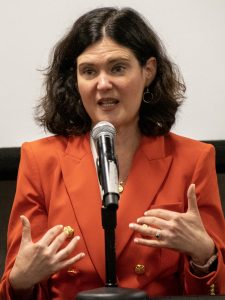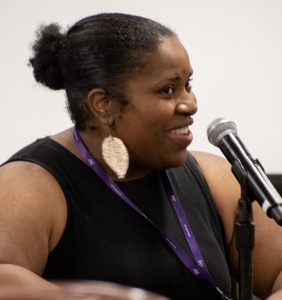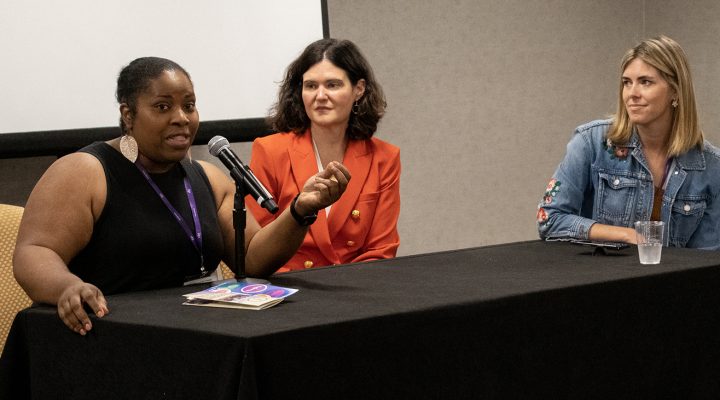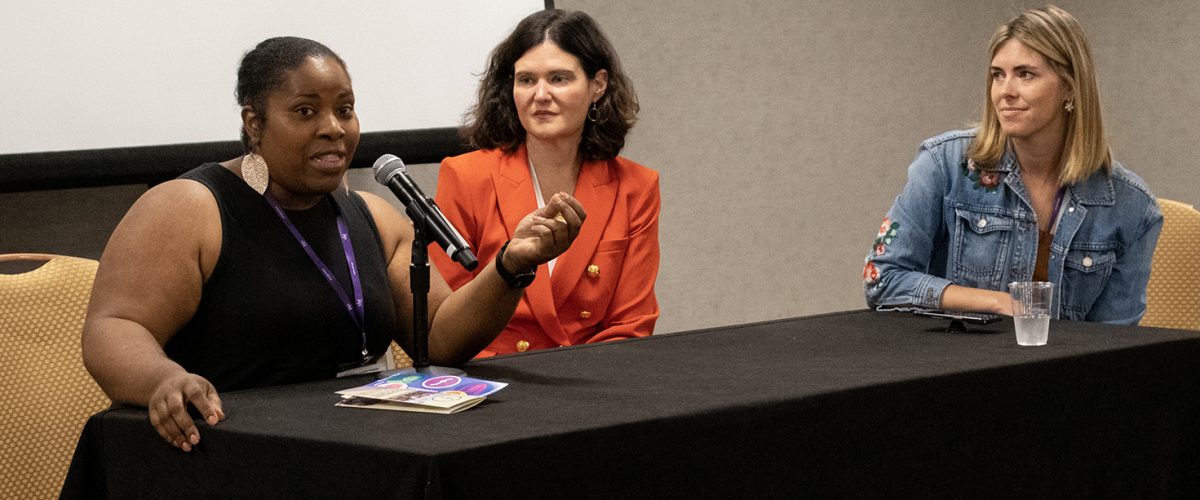The power of advocacy for just causes is grassroots — it grows from the ground up, a pair of nonprofit leaders stressed during the Cooperative Baptist Fellowship General Assembly in Atlanta June 30.
Cassandra Henderson, executive director of the Interfaith Children’s Movement, and Amanda Tyler, executive director of Baptist Joint Committee for Religious Liberty, addressed “Advocacy and Power: Coalition Building/Social Movements” in a CBF learning labs breakout session.

Amanda Tyler
“When we think about power (of advocacy), it’s how we have a grassroots movement that allows people to use their own power,” Tyler said.
U.S. people of faith exercise advocacy within democracy, which “is like a popularity contest” that functions through networks of personal relationships, Henderson added.
BJC is an 87-year-old Washington-based agency that champions “Faith Freedom for All” and historically practiced advocacy in the traditional top-down way, Tyler noted.
“But setbacks have come at a higher rate in recent years — not only at the U.S. Supreme Court, but also in Congress,” she said. “This caused BJC to think about advocacy in a different way, to mobilize individuals in their communities. … We’re trying to equip people to be advocates in their communities … to stand up for others.”
Advocacy involves empowering people to influence school boards, city councils and other groups.
For example, advocacy involves empowering people to influence school boards, city councils and other groups where resurgent white Christian nationalism is distorting history and curtailing religious liberty.
For almost 22 years, the Atlanta-based Interfaith Children’s Movement has sought to enable citizens “to be ready to make a move and take a stand” on behalf of children in their communities and across Georgia, Henderson said.
“Personal relationships impact democracy,” she reported, adding democracy requires complex strategy, like chess, fantasy football and Monopoly all rolled into one.
Tyler affirmed Henderson’s assertions about both the complexity and personal nature of advocacy.
“While systems are largely unjust, we have to figure out how to work in those systems,” Tyler said. For example, “Congress is not as dysfunctional as you think it is; it’s more dysfunctional than you think it is.”
Still, the personal/relational dynamics of advocating within the political sphere can bear fruit, she added. People who visit local offices in congressional districts receive a disproportionate share of attention, because so few constituents bother to visit those offices.

Cassandra Henderson
“They are motivated by their own self-interest to listen to you and to make you happy,” she said. “The way to seize more power is to show up, even if you voted for the other candidate. … And don’t underestimate the power of being annoying. They want to move on. Don’t let them move on until you get what you want.”
Henderson urged people who want to influence legislation and public policy to stay on the lookout for allies, among both elected officials and groups.
“See every other (person or group) as a potential partner,” even if they initially appear to be an adversary, she stressed. “Don’t assume how others think and feel. Work together where you can. As we like to say: ‘Never always an enemy; never always a friend.’”
Building friendships and forging alliances is a creative art, Tyler said. Build broad-based coalitions; advocates do not have to agree on everything in order to partner on issues where they agree. And don’t limit partnerships to faith groups; secular groups often share similar concerns and can be effective allies.
Advocacy is a multiplying endeavor, Henderson added. “Write, call and go to (lawmakers’) office hours to get a meeting. … One person who makes a contact represents 500 who don’t. So, if five people show up, the message is starting to resonate.”
Persistence matters, she said, explaining, “They have to hear messages multiple times from multiple people to know it’s a real thing.”


